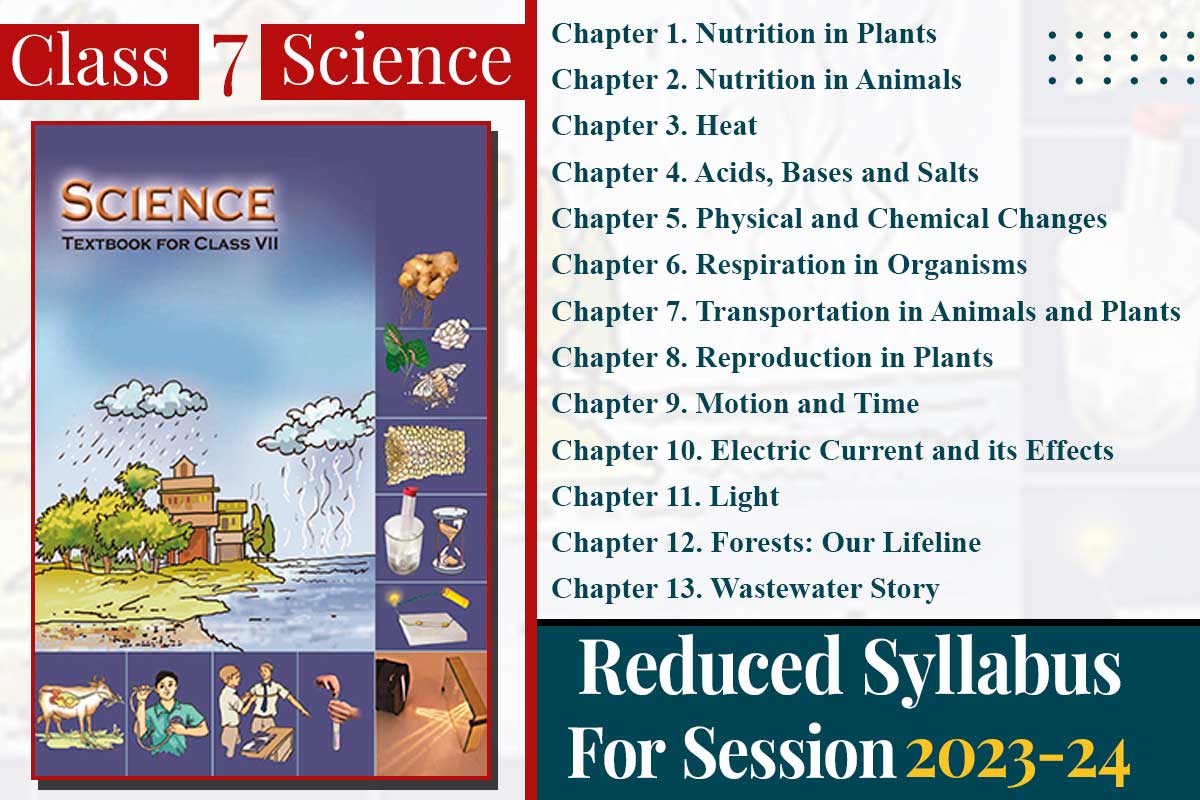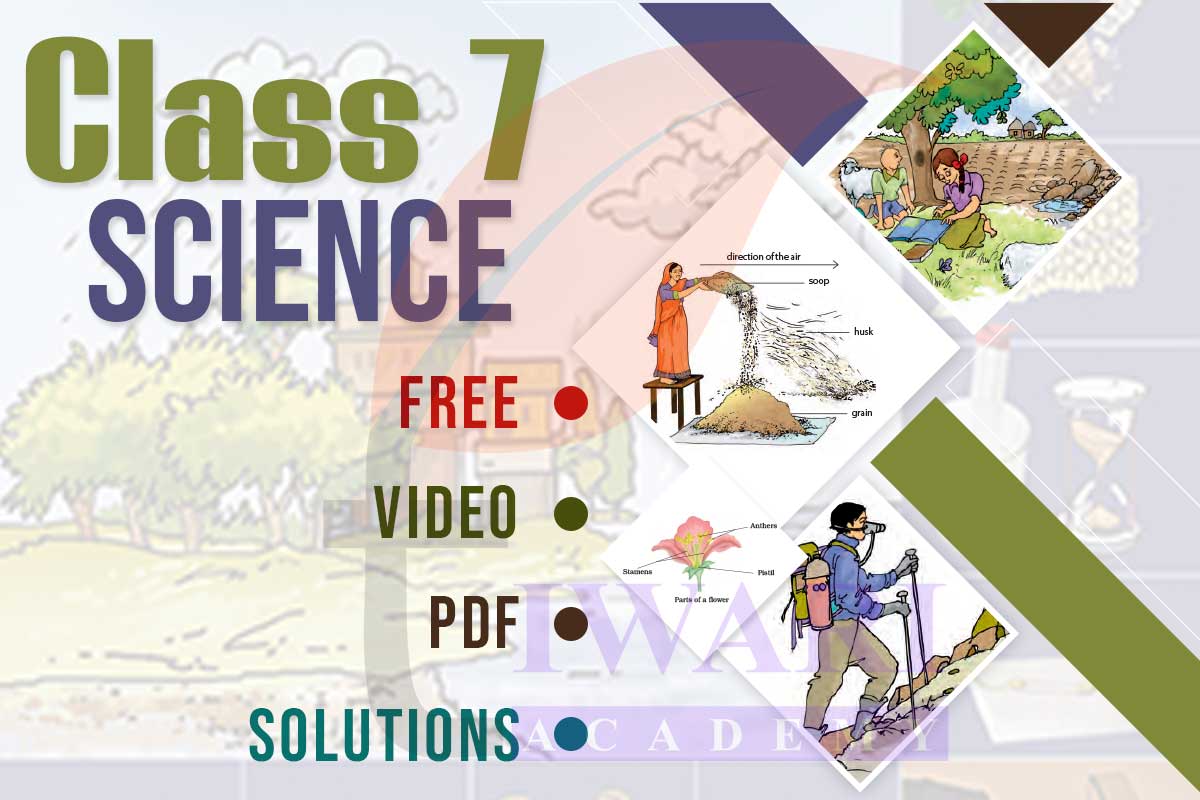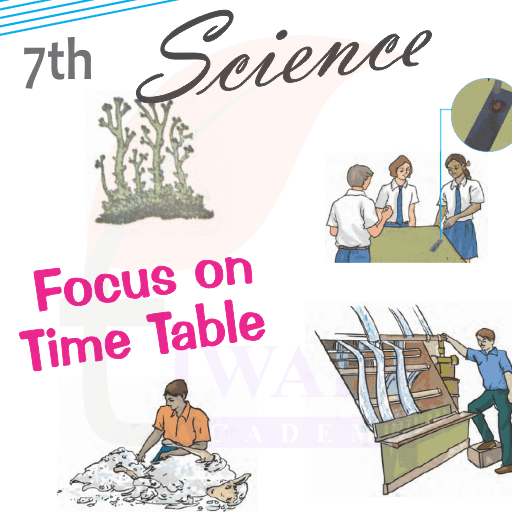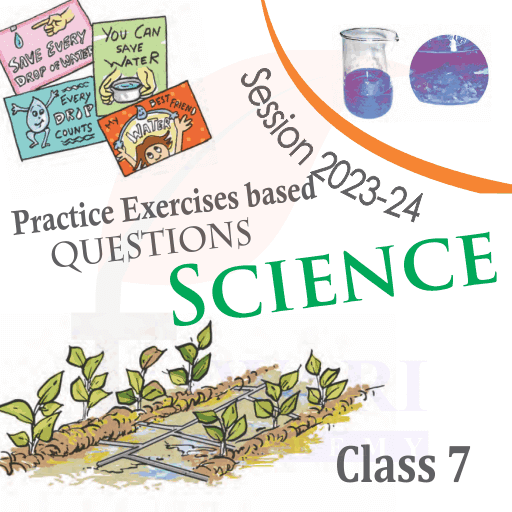Get here NCERT Solutions for Class 7 Science in Hindi and English Medium revised and modified PDF files. All the solutions are update for new academic session 2024-25. Tiwari Academy typically provides detailed solutions for all chapters and topics covered in the Class 7 Science NCERT textbook. This ensures that students have access to solutions for every concept they encounter in their curriculum. According to rationalised NCERT books published for 2024-25 exams, there are only 13 chapters in 7th Science curriculum.
NCERT Solutions of Class 7 Science
Chapter 1. Nutrition in Plants
Chapter 2. Nutrition in Animals
Chapter 3. Heat
Chapter 4. Acids, Bases and Salts
Chapter 5. Physical and Chemical Changes
Chapter 6. Respiration in Organisms
Chapter 7. Transportation in Animals and Plants
Chapter 8. Reproduction in Plants
Chapter 9. Motion and Time
Chapter 10. Electric Current and its Effects
Chapter 11. Light
Chapter 12. Forests: Our Lifeline
Chapter 13. Wastewater Story
Scientific knowledge drives technological advancements. By studying science, students gain the foundation needed to contribute to and benefit from technological progress. The solutions on Tiwari Academy are often designed to be easy to understand, making complex scientific concepts more accessible to students. This can be particularly helpful for students who may find certain topics challenging.
Revised NCERT Solutions for Class 7 Science
| Class: 7 | Science |
| Number of Chapters: | 13 (Thirteen) |
| Contents: | NCERT Solutions, MCQ, Extra Questions |
| Content Type: | Text, Images, PDF and Vidoes |
| Academic Session: | CBSE 2024-25 |
| Medium: | English and Hindi Medium |

Students can download 7th Science NCERT Solutions for the new session 2024-25 based on latest NCERT Books. Exercises questions are solved in simple language so that students can understand easily. All the contents on Tiwari Academy website or Apps are free to use. There is not any login or password condition to access the contents.
Online Books for class 7 science and their solutions can be downloaded without any registration. NCERT Solutions for class 7th other subjects are also given free to download. Android and iOS Offline Apps (for iPhone and iPad) for Class 7 Science in Hindi and English Medium is available on Play Store. If someone feel any inconvenience to get the textbook solutions or other study material, please contact us for help. We help all without any charges.
Class 7 Science Solutions in Hindi & English Medium
The simplified NCERT Solutions for Class 7 Science are now available in both English Medium and Hindi Medium free to download. The resources on Tiwari Academy are available for free, making it a cost-effective option for students and parents who are looking for extra help with Class 7 Science. These solutions are updated for current session 2024-25.
Science fosters creativity and innovation. Many scientific breakthroughs result from thinking outside the box and challenging existing theories or ideas. Tiwari Academy may provide sample papers, Study Material and previous years’ question papers, which can be valuable for exam preparation. These resources can help students become familiar with the exam pattern and question types.

7 Science in Hindi Medium & English Medium
Assignments related to Class 7 Science will be uploaded in the current academic session 2024-25 and Tiwari Academy can serve as a valuable supplement to classroom learning. It can help students reinforce what they have learned in school and provide additional explanations and examples. Students should verify the accuracy of the solutions provided on external websites like Tiwari Academy to ensure they align with the official NCERT curriculum.
How to Improve Study in Class 7 Science
According to new NCERT textbooks issued for 2024-25 exams, class 7 Science contains total of 13 chapter for academic session 2024-25. Using Class 7 Science NCERT Solutions at Tiwari Academy can offer several advantages for students studying this subject. Now the entire syllabus is reduced for terminal exams. So, in this way a student of class 7 can score well in Science exams. Here we are going to describe the ways to score maximum marks in least efforts. Tiwari Academy allows students to learn at their own pace. They can revisit the solutions and resources as many times as needed to grasp the concepts fully. Follow the tips and tricks given here to score 100 marks easily in class 7 Science Subject.
- Step 1: Follow the curriculum 2024-25 for 7th Science exam.
- Step 2: Strictly follow the Time Table during Study Hours.
- Step 3: Spend extra time for practice after doing homework.
- Step 4: Test yourself regularly by helping the classmate.
- Step 5: Practicing questions based on each paragraph of the lesson.
Step 1: Follow the curriculum 2024-25 for 7th Science exam.

Step 2: Strictly follow the Time Table during Study Hours.

Step 3: Spend extra time for practice after doing homework.

Step 4: Test yourself regularly by helping the classmate.

Step 5: Practicing questions based on each paragraph of the lesson.

Important questions from popular books, Vedic Maths, assignments, test papers, notes and online study material and may other things will be made available time to time. If you need any help, please feel free to contact us. We will make changes according to your suggestions.
Feedback & Suggestions for 7th Science Solutions
We are here to help the users. No registration or login is required for downloading or view online. We never call or message any user for product promotion. We are just trying to make education online more easier than ever. The website is often designed to be mobile-friendly, allowing students to access the solutions and resources from their smartphones or tablets, making learning more convenient. Frequently we receive feedback and suggestions from user’s side to improve the website. The contents website are just a result of these feedback. For session 2024-25, we are again updating our contents and going to add more digital contents for free.



